What you should know?
National Fire Protection Association (NFPA) 1851, Standard on Selection, Care, and Maintenance of Protective Ensembles for Structural Fire Fighting and Proximity Fire Fighting, lays out requirements for selecting, caring for, and maintaining firefighting personal protective equipment (PPE) to reduce health and safety risks resulting from improper maintenance, contamination, or damage. A major responsibility of maintaining NFPA 1851 compliance involves cleaning and maintaining it as well as documenting what has been done and when.
Fire departments must develop written standard operating procedures that describe the components of the program and define the roles and responsibilities of the organization and its members. Specifically, NFPA 1851 establishes the criteria you need to follow when setting up a program to reduce potential safety and health risks related to poorly maintained, contaminated or damaged protective ensembles and ensemble elements.
Departments with limited staffing or expertise in PPE cleaning can rely on an Independent Service Provider (ISP) for assistance. NFPA 1851 describes an ISP as an independent third party that performs advanced cleaning, inspection, and repair services for an organization. A "verified ISP" is defined as one that has been certified by a third-party organization to conduct advanced inspection, cleaning, sanitization, basic repair, and advanced repair services. To comply with NFPA 1851, fire departments must use a verified ISP when outsourcing these services. An ISP can also support fire departments in managing their care and maintenance programs and maintaining the necessary records for standard compliance.
Program components covered by the standard are:
- Selection
- Cleaning and decontamination
- Inspection
- Repair
- Storage
- Retirement
- Documentation and records
Selection
Prior to starting the selection process perform a risk assessment
- Facilitates comparative evaluation
- Ensures PPE is suitable for the hazards that are most likely to be encountered by your department
Before purchasing, make sure all ensemble elements properly interface to avoid possible injury or death
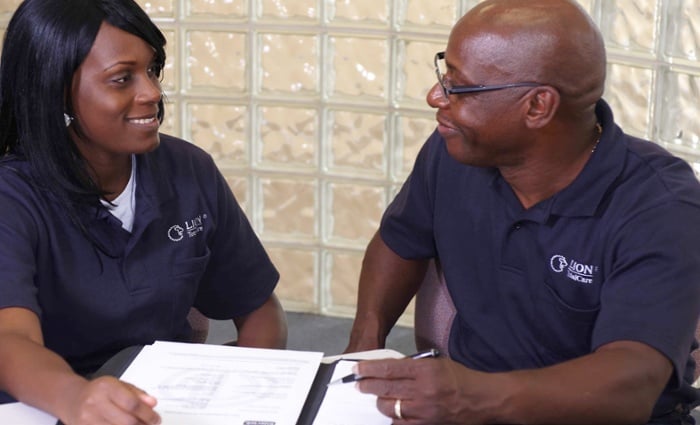
Cleaning
There are various cleaning methods depending on the type of contamination. These range from preliminary exposure reduction (PER) conducted on scene to advanced cleaning and sanitization using an extractor, or specialized equipment like CO2 cleaning for hazardous materials exposure. Regardless of the cleaning method, it's crucial for reducing health and safety risks to firefighters and maintaining the performance of PPE. Contaminants can also negatively affect the properties and performance of the gear. Advanced cleaning is performed by the element manufacturer, a manufacturer trained organization, a verified organization, or a verified ISP.
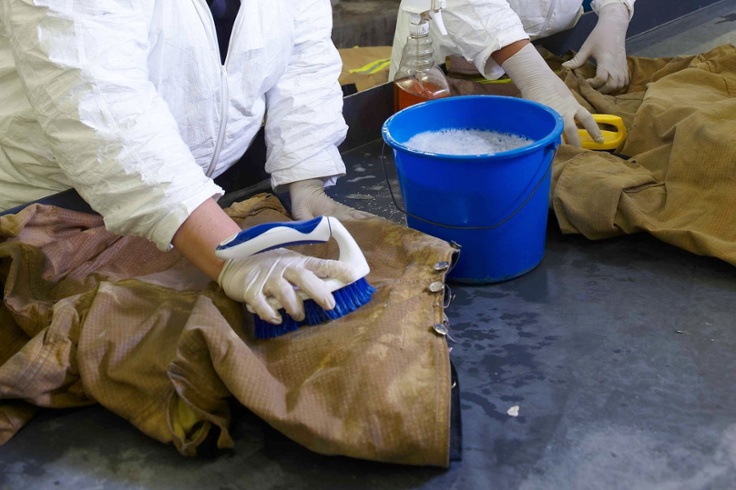
Inspection
For advance inspection, all separable layers, including the moisture barrier, of the garments shall be individually inspected for:
- Soiling, contamination and physical damage to all layers
- Loss of moisture barrier integrity
- Evaluation of fit and coat/trouser overlap
- Loss of seam integrity, and material integrity
- Loss of wristlet elasticity, stretching, runs, cuts, or burn holes
- Reflective trim and label integrity
- Closure system functionality
- Liner attachment systems
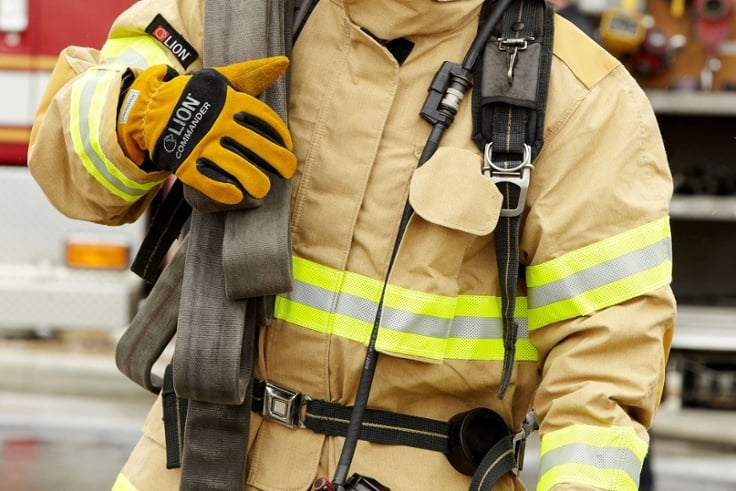
Repair
All repairs shall be performed by the original manufacturer, a verified ISP who has received training, or a member of the organization who has received training.
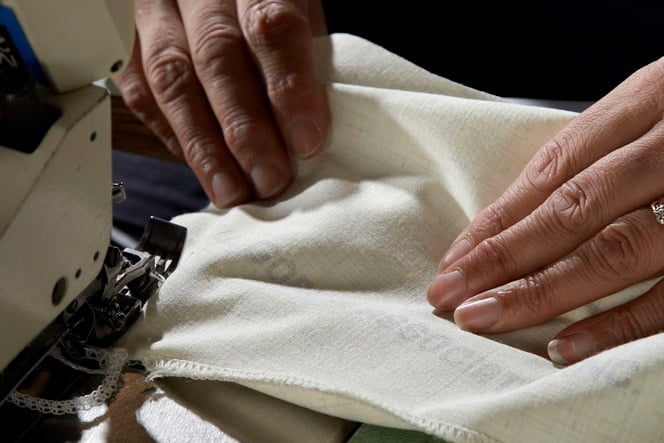
Storage
- Clean and dry before storage
- Coats and pants should be hung to limit the damage caused by creasing, and shall not be folded
- Storage areas should be clean, dry, and well ventilated

Retirement
- Structural and proximity fire fighting ensembles and ensemble elements shall be retired no more than 10 years from the date of manufacturing
- In all cases, the radiant reflective outer shell shall be replaced at a max of 5 years
- Shall be retired if:
- Worn or damaged to beyond reasonable repair
- Not compliant to NFPA standards when manufactured
- Contaminated, defective, or damaged
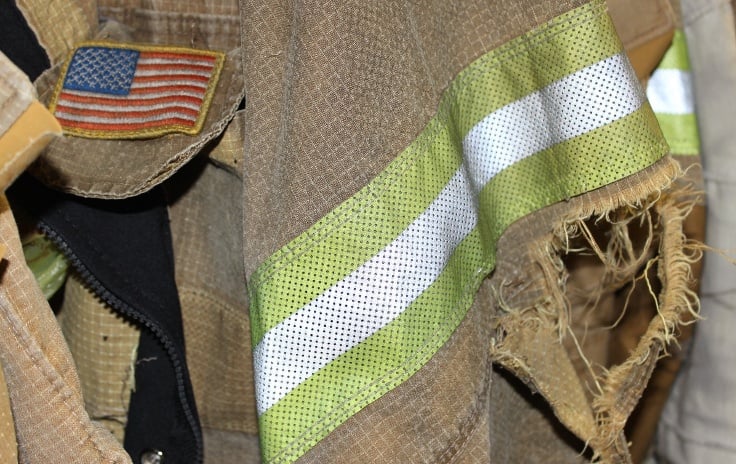
RECORDS
- Provides documentation on the steps taken by the organization to ensure PPE in service continues to provide sufficient protection
- Provides detailed information by individual if an injury or LODD occurs
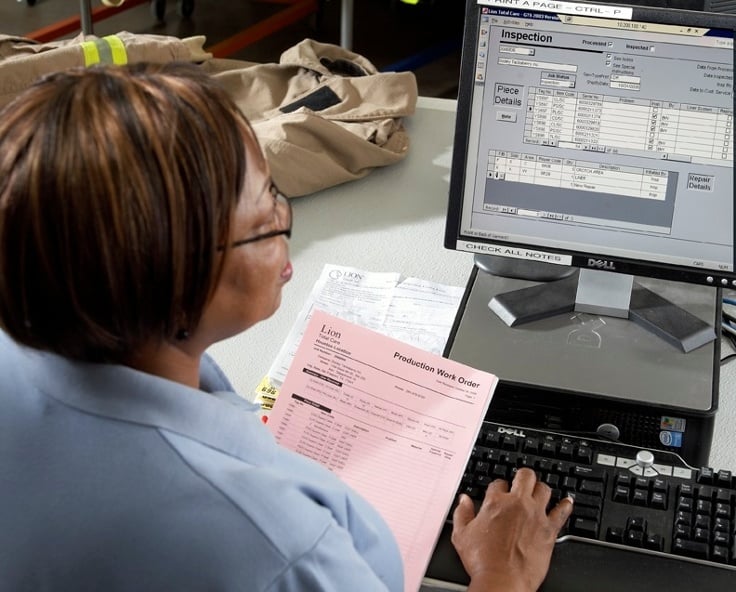
To find out more about cleaning and repair, visit the NFPA Research Foundation or request a copy of the the NFPA 1851 Standard on Selection, Care and Maintenance of Protective Ensembles for Structural Fire Fighting and Proximity Fire Fighting.
REDZONE CO2 CLEAN CASE STUDY
A success story about removing lithium-ion contaminants from garments.



